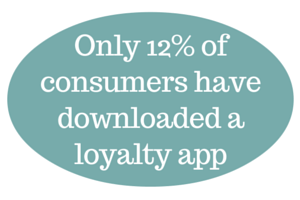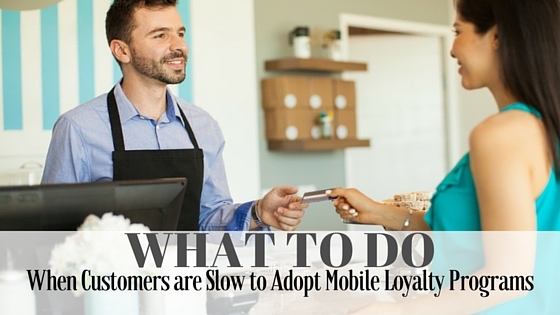Can CPS Cards help with your loyalty card program? Contact us or call 888.817.8121 to request a free quote.
When Customers are Slow to Adopt Mobile Loyalty Programs
Technology is moving fast, especially when it comes to smartphones. Over the past few years, we have migrated to a different way of life because of the technology that we carry with us 24/7. We now use phones to help us navigate to our destination, participate in social media, comparison shop while in store, take and store photos and even watch live television. Things that were unthinkable just a few years ago took a fast track to where we are today – totally immersed in our technology.
So, it would be natural to think that mobile loyalty programs would follow this same quick adoption path. However, this is not the case – unless you are Starbucks. Starbucks spent years developing and molding their loyalty program before they led their loyal followers to the mobile side. Plus, their customers can pay for their frothy drinks using the app, which gives it an added lift. But for other brands, who offer a mobile-based loyalty program, it has been a challenge to get consumers to jump on board. According to t he 2015 Bond Brand Loyalty Report, only 12% of consumers have downloaded a loyalty program app.
he 2015 Bond Brand Loyalty Report, only 12% of consumers have downloaded a loyalty program app.
The App Conundrum
You might want to put your earmuffs on at this point because I’m about to say something that you probably don’t want to hear. Your customers, most of them, don’t care about your loyalty app. That is unless they are super fans of your brand already. When you are a super fan, you want to follow everything your favorite brand is doing, and you want to know about every sale and every coupon. But most of your customers are not super fans. They are simply loyal (or at least loyal-ish) customers that DO frequent your stores and, yes, they would like to know about sales and coupons. But they aren’t ready to add your app, which, by the way, is one of only a million+ available, to their already crowded phone that is running out of data space. And for those “app-less” mobile loyalty programs in which a cell phone number serves as a program ID, well, customers are leery to give out their phone number for fear that they will get robocalled. Plus, it’s a lot easier to steal rewards when all the cashier requires as ID is a phone number.
Now, there has been some discussion around adding loyalty programs to mobile wallets, thus saving the consumer’s valuable data space, however, there are not many companies actually doing this yet since most mobile wallets haven’t found their footing yet.
So what do you do when customers don’t want to add your mobile app? You make sure you are still offering a traditional rewards card until they are ready to make the move.
Traditional Card + Mobile App = Perfect Loyalty Harmony
Over the past few years, we have seen several brands that have launched new loyalty programs without a traditional loyalty card. They are skipping this step in order to build, what is perceived to be, a more cost-efficient mobile program. However, is it really cheaper whenever you include the cost of developing the app and then need to account for the reduced sales volume due to low program adoption?
To truly ensure success for your loyalty program, a two-prong approach should be taken, that is, offer both a mobile program AND a traditional loyalty, or, if you prefer, “companion” card. Here’s why:
- Demographics. Your brand may appeal to both young and old alike. But we all know that the millennials are tech-driven and the boomers still like the “touch-and-feel” approach. By offering both, you satiate both audiences.
- Convenience. With both a card and an app, your customers have two ways to access their loyalty program – and USE it! Sometimes smartphones simply don’t work properly – a lost signal or even a lost phone – means that your customers are out-of-luck at the checkout counter. But, a back-up physical card will save the day.
- A loyal reminder. While apps get buried within smartphones, a card in your customer’s wallet holds a more prominent place. It visually (and sometimes subconsciously) reinforces your brand image, while reminding the customer that they need to visit soon.
- Speed. Technology is not always faster. When customers use a loyalty app, they must first find it on their phone, open it and then can used it. A card is much quicker and is always reliable.
- Security. It is easier to steal loyalty rewards whenever a customer’s phone number is used as their ID, and no app or card is required.
Just as brands take an omnichannel approach by marketing across several platforms, loyalty managers must consider an ominchannel offering for their programs as well. No one can argue that fact that mobile loyalty programs have many more bells and whistles than its loyalty card predecessor, however, providing multiple options for your customers helps to ensure better engagement and more frequent visits.
